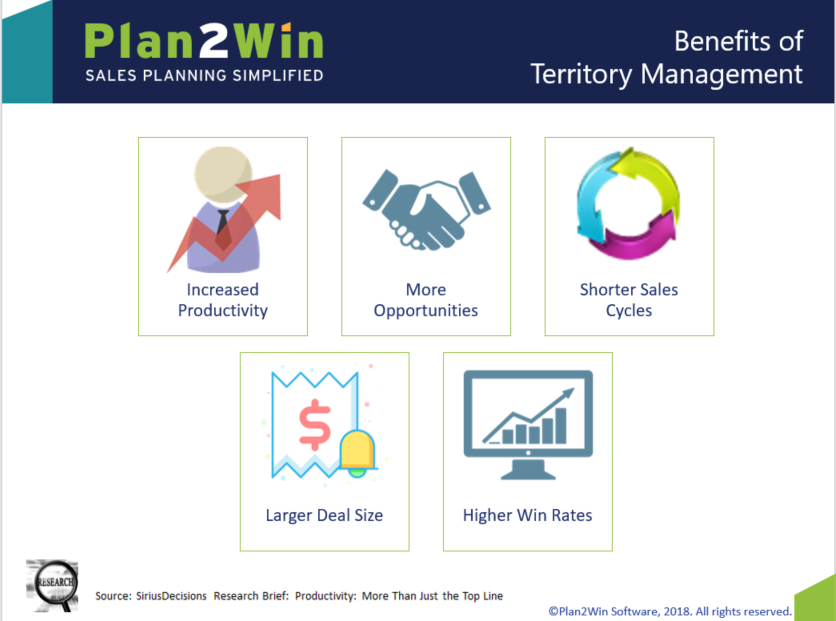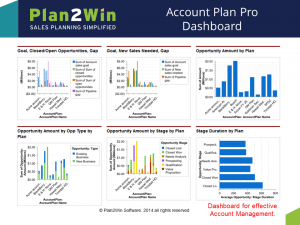Is your Account Management Agile?
Posted by Ron Snyder in Account Based Management, Account planning, Strategic Account Management | 0 comments
 Today, development teams use agile development techniques so they can develop products, get them
out into the user world and iterate based on feedback. Likewise, account teams need to be able
to develop effective strategic account plans, implement them and adjust as the situation in the
account unfolds; adjusting in real time to changes in their accounts.
It is a brave new world out there! Technology has changed the way we sell and interact with
customers and prospects. Many sales teams are struggling to achieve their goals. According to
Miller Heiman Group’s “Future 4” Webinar, Nov 2017:
Today, development teams use agile development techniques so they can develop products, get them
out into the user world and iterate based on feedback. Likewise, account teams need to be able
to develop effective strategic account plans, implement them and adjust as the situation in the
account unfolds; adjusting in real time to changes in their accounts.
It is a brave new world out there! Technology has changed the way we sell and interact with
customers and prospects. Many sales teams are struggling to achieve their goals. According to
Miller Heiman Group’s “Future 4” Webinar, Nov 2017:
- The percentage of reps making quota is down 10% (from 63% in 2012 to 53% in 2017).
- The percentage of companies achieving their revenue plan is down 4% (from 89% in 2012 to 85% in 2017).
- There are more people involved in the buying process.
- More buyers have formal processes that sellers must adhere to.
- It is harder to reach people.
- More buyers are requiring financial justification of purchases.
- Missing opportunities in key account; a formal process will bring them to light.
- Not having a common plan and account data across the team, thus not leveraging cross-functional knowledge of the account to respond to changes in the sales situation, resolve issues quickly and maintain customer satisfaction.
- Not leveraging relationships with key decision influencers in the account, which a common plan across the team would enable.
- Poor resource management across important accounts and opportunities. There is a need for a better process to manage utilization of resources across the team.
Dreamforce 2017: Intelligence is the Next Industrial Revolution
Posted by Ron Snyder in Salesforce Dreamforce | 1 comments
 The central theme of the conference was that
Intelligence is the next Industrial Revolution. One of the
things that Salesforce is so good at is leveraging and even
driving key trends. Staying on top of the trends will help
you drive growth in your organization. This is a trend you
want to take advantage of because it can help you and your
team do your jobs better, faster and easier. To put this in
perspective, here is an overview of the evolution of the
technological revolutions:
The central theme of the conference was that
Intelligence is the next Industrial Revolution. One of the
things that Salesforce is so good at is leveraging and even
driving key trends. Staying on top of the trends will help
you drive growth in your organization. This is a trend you
want to take advantage of because it can help you and your
team do your jobs better, faster and easier. To put this in
perspective, here is an overview of the evolution of the
technological revolutions:
- Steam: a much better way of propelling vehicles and harnessing energy.
- The automobile: mass production of the automobile, then trucks- with the creation of good roads- made transportation of people and goods generally available. (I added this one.)
- Electricity: a much better way of powering things and transmitting energy.
- Computing: harnessing machines to do tasks more consistently and faster. (I added this one.)
- The Internet: making information and computing available in a virtually ubiquitous manner. (They called this computing, but the date they gave, 1995, coincides with the advent of the first internet browser.)
- Mobile Devices: making it easy to access the internet and services virtually anywhere. (I added this one.)
- Intelligence: taking data and turning it into insights that enable jobs to be done more efficiently- or do jobs that couldn’t have been done before due to the complexity or response time needed.
- See how you can utilize Salesforce’s Einstein. It can help you do a better job of finding the best leads and opportunities to work on and help you identify deals that need to be worked on to make your forecast.
- Use some of the other tools in the AppExchange to improve your team’s effectiveness and efficiency. For example, there are offerings that enable you to record and serve up video for training and vetting of sales reps. One of these uses IBM’s Watson to review presentations that sales reps record and submit. The program grades how well a customer will receive a presentation from an emotional perspective and provides a translation of the script for the evaluator to read. The manager or assigned person then reviews the presentation- accessing it through the system- and provides feedback. You can also place the presentations on a leader board so that team members learn from each other.
Deliver Incredible Value to Customers in the New Year
Posted by Ron Snyder in Account planning, Best Practices, Sales Management, Sales planning, Territory planning | 0 comments
 If you want to get a great start in the new year, focus on how you can deliver unique value to
your customers. There is a lot of talk about “adding value” for customers. Why is this so
important and how can you do it?
If you want to get a great start in the new year, focus on how you can deliver unique value to
your customers. There is a lot of talk about “adding value” for customers. Why is this so
important and how can you do it?
Adding value enables you to set yourself apart when customers have a hard time distinguishing between alternatives. It can be the key to winning your first business deal with a new account or building a stronger relationship with an existing account.
Creating and implementing strong territory and account plans is an important part in this endeavor. Effective account management increases return from strategic accounts by 145%, according to Actify’s Account Planning Book of Evidence.
Here is how you can add value:
1. Be an indispensable resource.
In each communication, share creative resources and/or unique insight to help solve their issues. Provide links to white papers, expert opinions, case studies, user guides, set up guides and consulting services.
2. Be proactive.
Continuously scan their environment for new issues or untapped opportunities where you might be able to help them be more successful.
Poor Account Management is Costing You Business
Posted by Ron Snyder in Account planning, Best Practices, Key Account Strategy, Sales Management | 0 comments
Poor account management may be costing more than you realize.
 Some of the critical effects may go unnoticed until it is too late, costing you in many ways,
including:
Some of the critical effects may go unnoticed until it is too late, costing you in many ways,
including:
- Missing important opportunities in strategic accounts or, even worse
- Losing important accounts.
- When customers leave, 68% of them do so because they felt poorly treated.
- You’ll spend up to 5 times more to win a new customer than it will cost to retain an existing one.
Opportunity-Account Management; Virtuous or Vicious Cycle?
Posted by Ron Snyder in Account planning, Key Account Strategy, Opportunity Management, Sales Management | 0 comments
By Ron Snyder of Plan2Win Software and Jim Naro of The Naro Group
According to Gartner Group, “65% of a company’s business comes from existing customers and it
costs 5 times as much to attract a new customer than to keep an existing one satisfied.”
This indicates the importance of not only doing a good job of managing opportunities during
customer acquisition, but also following up with purposeful customer engagement to grow
relationships and drive revenue growth on an ongoing basis.
When do you actually cross the finish line? Is it when you win the first deal? The gap between opportunity management and account planning is not new and it’s typically
driven by several misconceptions, such as:
The gap between opportunity management and account planning is not new and it’s typically
driven by several misconceptions, such as:
- Opportunity management is a “won and done” achievement
- Account planning is just a once-a-year effort
- Account planning and opportunity management are independent efforts that require mutually exclusive skills, processes and vernacular
- Building your relationships and sphere of influence is part of account planning only; it’s not part of opportunity management
- It’s OK to implement these processes in silos within the organization

Building Relationships is Key to Successful Account Strategy
Posted by Ron Snyder in Account planning, Key Account Strategy, Sales Management | 0 comments
We have identified how to use relationships to implement 7 key account strategies that will
maximize your results.

Account Strategies
- Defend and Grow
- Land and Expand
- Direct Attack
- Niche
- Change the Game
- Maintain and Support
- Develop Over Time
Territory and Account Management are Key to Success
Posted by Ron Snyder in Account planning, Best Practices, Sales Management, Sales planning, Territory planning | 0 comments
John Reighard, who has been a very successful sales leader, says that territory and account management is central to success. He has earned $90,000 per month and has led sales teams to greatly out-perform expectations and their peers. See the short video. https://youtu.be/43TcozQlYaY

